�
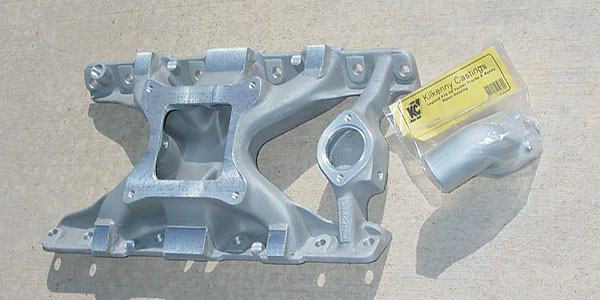
�
Willpower single-plane intake manifold for the Buick/Olds/Rover aluminum V8.
�
(From Australia, this intake manifold is marketed in the U.K. by Wildcat.)
�
Intake Manifolds
� This article appeared in The British V8 Newsletter - Volume IX, Issue 2 - May 2001�� by: Dan Masters�
�
Intake manifold design is part science, part art, and a little bit of magic. Intakes �
are available in a dizzying array of types and designs. Looking through some of the �
catalogs, there are listings for Torker, A-CELerator, Tunnel Ram, Hi-Rise, Performer, �
Performer RPM, Port-O-Sonic, Cross Flow, 360 degree Equa-Flow, RamJet - and the list �
goes on. �
�
Choosing the correct intake for your conversion can be a daunting task. Get the right �
one, and your engine will be a sweet performer, choose the wrong one, and your engine �
will be a pig. In his book "How To Build Horse Power," David Vizard reported as much �
as 70 HP difference between various intakes on a small block Chevy.�
�
Generally, intake manifolds come in two major categories: single-plane or dual-plane. �
In a single-plane manifold, there is just one hole under the carburetor; in a �
dual-plane, there are two holes under the carburetor. In the single-plane configuration, �
all cylinders of the engine draw from all barrels of the carburetor. In the dual-plane �
configuration, the opening under the carburetor is divided into two halves, such that �
one half of the cylinders draw from two barrels (primary and secondary), while the �
other half draw from the other two barrels.�
�
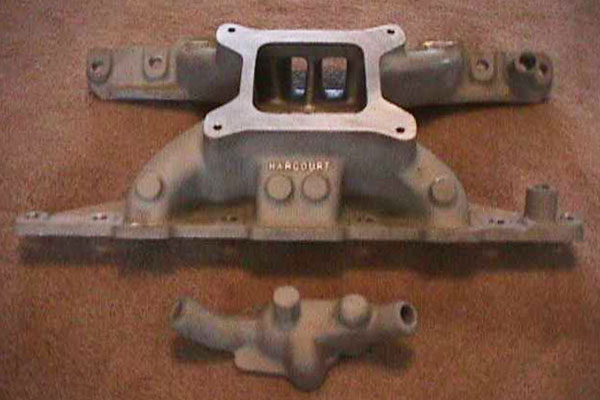
�
John Harcourt in New Zealand offers the HC-14 single-plane intake manifold for racing.
�
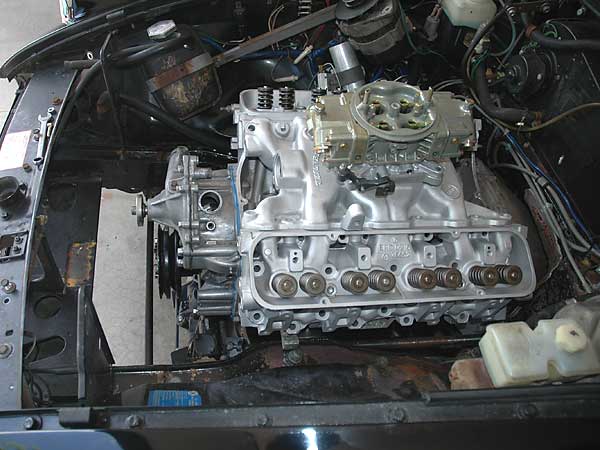
�
Developed in the 1960's and still popular, this is Offenhauser's "360" (5165) single-plane intake manifold.
�
(Offenhauser's 5182 is an unheated, competition-only version of this manifold. Offenhauser also makes
�
multi-carburetor manifolds for Buick/Rover engines: 5164 for 2x 2bbl, and 5262 for 3x 2bbl.)
�
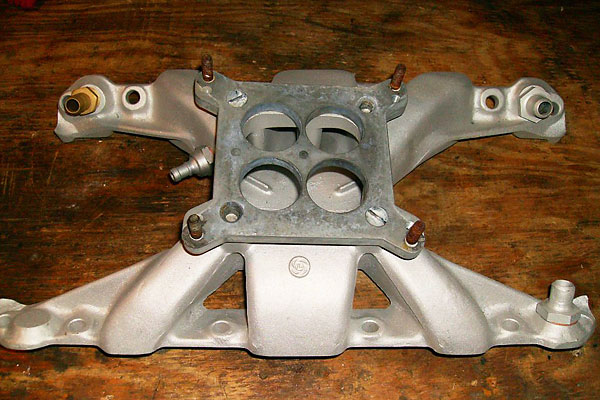
�
Huffaker Engineering of California developed this single-plane manifold for British Leyland Motorsport.
�
(This is the only manifold shown here that can possibly accurately be called "rare" or "hard-to-find".)
�
Rule: "Single-plane" is better at high RPM; "Dual-plane" is better at low RPM.
�� At low rpm, the intake vacuum signal from each cylinder is fairly small. Dividing � this small signal between both primaries in a single-plane manifold results in a � weakened air flow through the carburetor, resulting in poor low RPM performance. � At high RPM, the intake vacuum signal is high enough to draw properly through all � four barrels - primaries and secondaries - so the engine runs strongly at the � elevated RPM range.� The converse is true for a dual-plane intake. At low RPM, the vacuum signal from � each cylinder is sent to only one side of the carburetor, resulting in a good air � flow. At high RPM, however, airflow through only one side of the carburetor may be � restricted, choking the engine.�
�| �
Enjoying this article? Our magazine is funded through the generous support of readers like you! � To contribute to our operating budget, please click here and follow the instructions. � (Suggested contribution is twenty bucks per year. Feel free to give more!)� |
�
As with anything, comprises may be made. Basically, if a single-plane intake is�
designed for low speed operation, the high speed benefits will be lost, and if a �
dual-plane intake is designed for high speed operation, performance will be reduced �
at low speed.�
�
All of the other intake designs mentioned earlier are based on one or the other of �
the dual/single-plane principle. The first consideration, therefore, in selecting �
an intake should be your preferred driving style. For most of us, low speed torque �
will give the most pleasing results - how many of us will consistently operate our �
engines in the 5000rpm range?�
�
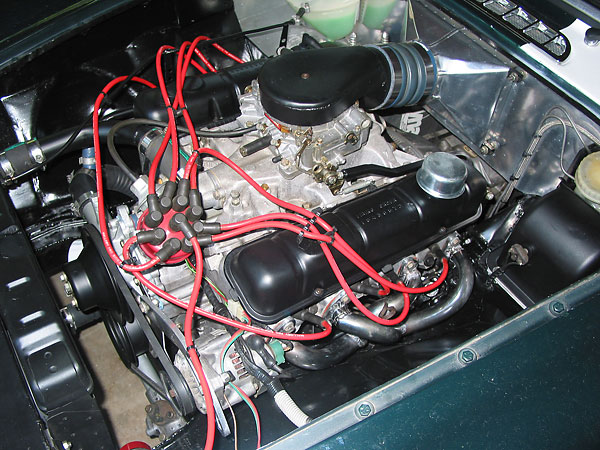
�
Buick's original, very low height, dual-plane intake manifold design is still a favorite.
�
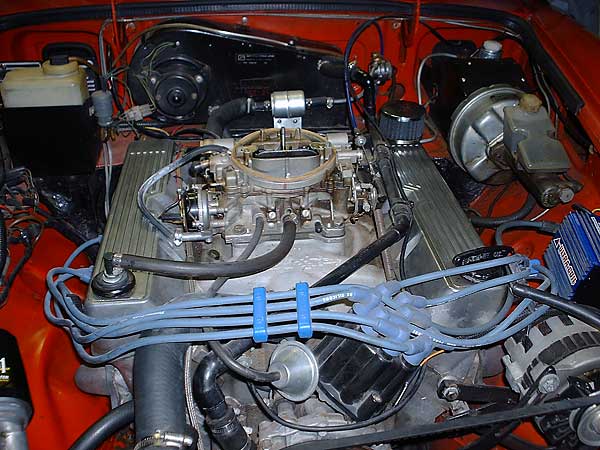
�
Offenhauser's "John Woolf Racing" 7001-DP dual-plane intake manifold is almost as low.
�
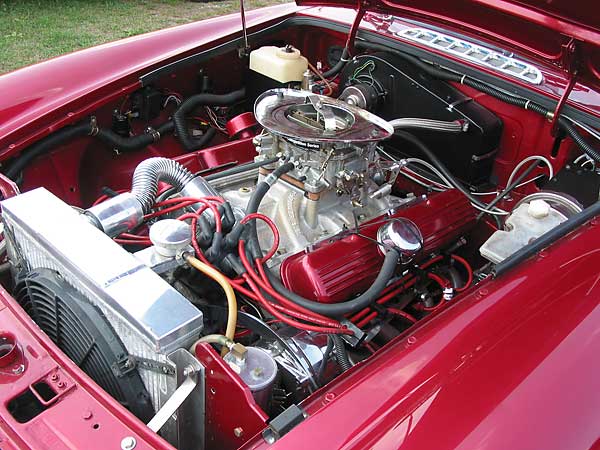
�
Edelbrock's "Performer" 2198 dual-plane intake manifold is obviously appreciably taller...
�
�
Once that has been decided, your search for an intake can begin.�
�
You have two options for selecting an intake. The first option is to spend time on �
a dyno, swapping intakes until you find the right one. If this option is open to �
you, then you probably won't be reading this article. The other option is to compare �
results found by others, using the same or similar engine combination - cam, �
compression ratio, bore/stroke, etc. - as you are using. If you have a Chevy or a �
Ford V8, you're in luck, because all of the major "hot rod" type magazines run �
frequent articles on performance testing of various intakes, and a search through �
back issues at your local library should give you all the data you need for your �
decision.�
�
For those of you using the BOP/Rover engine, you're not as lucky. The mainstream �
magazines seldom report on these engines. Your best source of information is this �
newsletter, and contacts with other BOP/Rover owners. �
�
Disclaimer: This page was researched and written by Dan Masters. Views expressed �
are those of the author, and are provided without warrantee or guarantee. Apply at your �
own risk.�
�
�
This article was unillustrated when originally published in British V8 Newsletter, Volume 9 Issue 2, May 2001.�
�
Photos by Tony Hoffer, Greg Williams, Richard Morris, Mike Perkins, Curtis Jacobson, Martyn Harvey and Curtis Jacobson�
respectively - from the BritishV8 photo gallery and archives - and captions written by Curtis Jacobson, have�
been added with internet publication.�
�
Flow-bench test results for Willpower/Wildcat and Huffaker/BL Motorsport �
single-plane manifolds can be found on
�
The BritishV8 Message Board�
�
Some additional manifold options can be found in:
�
The V8 carbs: Information on Webers�
�
Custom fabricated intake manifolds can be seen at:
�
Under-Hood Eaton M90 Supercharger and
�
Les Gonda's MGB GT V8 Race Car �


